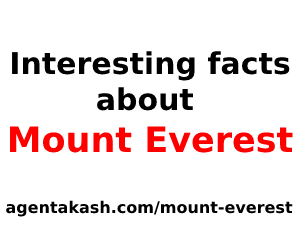The Mount Everest Expedition is an opportunity for a unique experience as vacationers climb Mount Everest. As you climb Everest, you will be overwhelmed by the Mount Everest route. The Mount Everest Expedition trail has spectacular views and sociable Sherpa people.
Guides make all the arrangements for your Mount Everest Expedition trip because when you climb Everest, they will be of great help on the Mount Everest Expedition trail. As you climb Mount Everest, food sources are almost unavailable on the Mount Everest trail and the Sherpa who are a nomadic people and have lived close to the Mountain will carry your supplies up the mountains. It takes many weeks for the Mount Everest Expedition because of the need for the body to adapt to higher altitudes when you Mount Everest.
Mountaineers come from all parts of the world to climb Everest and attempt to get to the summit. While the Mount Everest expedition trail is not quite a formidable climb, people who want to climb the Mount Everest Expedition should be aware of the hazards as they climb Everest. As you are on the Mount Everest Expedition, there is the possibility of experiencing altitude sickness, freezing atmospheric conditions, and very severe winds.
Preparation before your Expedition to Everest is important and so is the climbing gear that your Mount Everest expedition agency will advise you on. The shoes and clothes you wear and as you climb Mount Everest should be particularly for the summit attempt. Anyone who wants to do the Mount Everest Expedition should be in excellent physical shape while on the Mount Everest expedition trail because when you climb Mount Everest you will need enough oxygen supply.
Cost of a Mount Everest Expedition
Climbing Everest is expensive due to permits, gear, and logistics. Here’s a breakdown:
Permits:
- South Side (Nepal)
- North Side (Tibet)
Guided Expedition Cost:
- Depending on services
Additional Costs:
- Gear
- Travel & insurance
- Tips for Sherpas
Training & Preparation for Everest
Climbing Everest is not for beginners. You need:
Physical Fitness:
- Strong endurance (able to hike 6-8 hours with a heavy pack)
- High-altitude experience (climb at least one 6,000m+ peak)
Mental Strength:
- Handling extreme cold, fatigue, and altitude sickness
- Staying calm in life-threatening situations
Training Timeline:
- 12-18 months of intense cardio, strength training, and high-altitude climbs
Routes to the Summit of Mount Everest
There are two main routes to climb Everest:
- South Col Route (Nepal Side)
Most popular (used by 70% of climbers)
Starts at Lukla – Everest Base Camp (5,364m) → Khumbu Icefall → Summit
Pros: Better support, more Sherpa assistance
Cons: Crowded, dangerous icefall
- North Ridge Route (Tibet Side)
Less crowded but more challenging
Starts at Tibet → Rongbuk Glacier → Advanced Base Camp (6,400m) → Summit
Pros: Fewer climbers, no icefall danger
Cons: Strong winds, colder temperatures
Risks & Challenges of Climbing Everest
- Altitude Sickness (AMS, HAPE, HACE) – Can be fatal if ignored
- Extreme Weather – Sudden storms, freezing temperatures
- Avalanches & Icefalls – Especially in the Khumbu Icefall
- Frostbite & Hypothermia – Common above 8,000m
- Oxygen Deprivation – Low oxygen levels can cause confusion & death
Success Tips for Summiting Everest
- Choose a Reputable Guide – Experienced teams increase success rates
- Acclimatize Properly – Spend weeks adjusting to altitude
- Monitor Weather Closely – Summit only in safe conditions
- Listen to Your Body – Turn back if health is at risk
- Respect the Mountain – Over 300 climbers have died on Everest
Conclusion:
A Mount Everest expedition is the ultimate adventure, but it’s also dangerous and expensive. Proper training, a strong team, and respect for the mountain are key to success.


